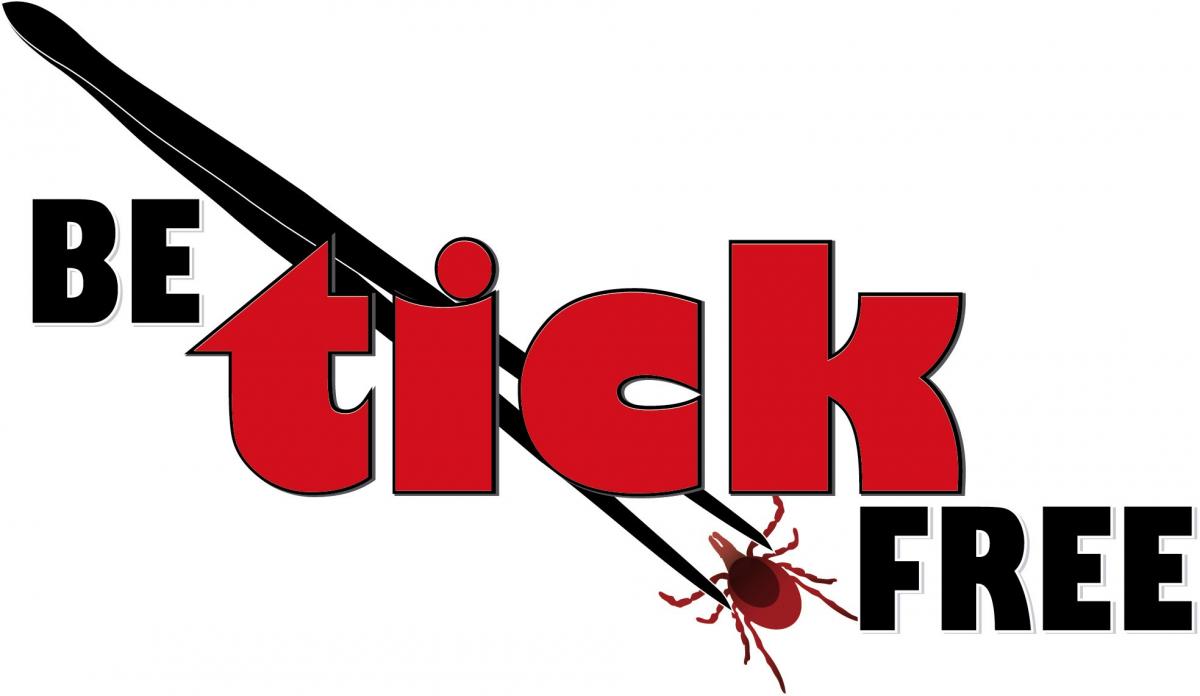
You Have the Power to Protect Your Family from Tick-Borne Diseases
- Wear light-colored clothing with a tight weave to spot ticks easily.
- Wear enclosed shoes, long pants, and a long-sleeved shirt. Tuck pant legs into socks or boots and shirt into pants.
- Check clothes and any exposed skin frequently for ticks while outdoors and check again once indoors.
- Use insect repellent, according to label directions.
- Stay on cleared, well-traveled trails. Avoid contacting vegetation.
- Shower soon after being outdoors (ideally within 2 hrs.)
- To make checking for ticks easier, use a full-length mirror and a magnification mirror.
- After returning from outdoors, place clothes in a dryer on high for 10 minutes.
- Having an indoor/outdoor pet can increase household exposures to ticks. Consult a vet about the best tick prevention for your pet(s). http://www.tickencounter.org/prevention/tick_control
MOST IMPORTANTLY > Check everyone thoroughly for ticks, including pets, as soon as possible after being outdoors - and at the end of each day. Remove ticks promptly and properly.
If you are bitten by a tick:
- Do not squeeze or crush the tick’s body which may cause it to inject the germs it may be carrying into you, before releasing.
- Use a tick twister to grasp the tick's mouth parts as close to your skin where they insert. Carefully twist the tick in a steady upward motion away from the skin.
- If parts of the tick remain in the skin, remove as you would a splinter.
- Disinfect the site and your tick twister with soap and water, rubbing alcohol or hydrogen peroxide. Wash hands.
- Record the date and location of the tick bite and contact your health care, provider.Some health care providers will prescribe a Lyme disease prophylaxis or prevention dose, if it can be started within 72 hours of tick removal and other circumstances exist that can be reviewed here
- If you develop a rash or flu-like symptoms, contact your healthcare provider immediately.
- You may save the tick for species identification available through the Ulster County Department of Health.
Tick Check Routine:
The goal is for everyone to make daily tick checks part of their grooming routine; just like brushing one's teeth, or any personal care routine that would never be missed. A thorough check of body surfaces for ticks should be done multiple times per hour when in tick habitat, and multiple times per day.
Tick Habitats:
To avoid ticks, walk in the center of trails and avoid vegetation. Ticks live in moist and humid environments, particularly in or near wooded or grassy areas. However, you may come into contact with ticks during outdoor activities around your home or when walking through the grass but especially in vegetation such as tall grass, leaf litter, shrubs and even on rock walls.
Found A Tick:
If you found a tick attached to yourself or a loved one, you may wonder what to do next…
On a positive note, you are fortunate that you found the tick attached, as careful symptoms observation and early treatment can be initialized if necessary.
If you already removed the tick, hopefully, the recommended tool, needle pointed tweezers, and proper removal techniques were utilized. Remember to disinfect the removal tool and site of tick attachment.
How to Properly Remove a Tick:
This remover effectively removes the whole tick without breaking the mouthparts. It also aids in preventing the transfer of germs that may be present in the tick’s gut by not squeezing or compressing the tick during the removal process.
It is very important to save your pest! Bring it to your doctor’s office in a secure container. They should observe it to determine the species of tick because treatment and testing determinations can be made based on this information. The Ulster County Deptartment of Health can also provide tick identification. The Ulster County Tick Identification Service will not tell you whether the tick is infected with disease-causing organisms.
It is critical to contact your health care provider immediately to address any treatment that may need to be started.
It is important to consider that not every tick attachment results in illness because not every tick has disease-causing organisms. In addition, if the germs are present, in most cases, it takes time for the germs to move from the tick to the host.
Documented Transmission Times According to NYS DOH:
| Powassan Viral Encephalitis or Deer Tick Virus | If removal of attached ticks occurs within 15 minutes, the risk of tick-borne infection is reduced. |
| Anaplasmosis | If removal of attached ticks occurs within 12 hours the risk of tick-borne infection is reduced. |
| Ehrlichiosis | If removal of attached ticks occurs within 36 hours, the risk of tick-borne infection is reduced. |
| Babesisosis | If removal of attached ticks occurs within 24 hours, the risk of tick-borne infection is reduced. |
| Lyme disease | If removal of attached ticks occurs within 36 hours, the risk of tick-borne infection is reduced. |
Ticks and some of the associated tick-borne illnesses among people living in the Hudson Valley and Ulster County area:
| Black-legged tick, also known as Deer tick | Lyme disease, Anaplasmosis, Babesiosis, *Powassian Viral Encephalitis/Deer Tick Virus, Borrelia miyamotoi |
| Dog ticks | Tick Paralysis, **Rocky Mountain Spotted Fever |
| Wood Chuck tick | *Powassian Viral Encephalitis |
| Lone Star tick | Ehrlichiosis |
* This is not a common disease in this area but some cases have occurred in the Hudson Valley.
**Ulster County has had only a handful of cases over many years and they may be travel related because cases are counted based on the zip code of where the person lives.
The most common tick-borne illness in Ulster County is Lyme disease.
Tick Testing:
People who have removed a tick often wonder if they should have it tested. The US Center for Disease Control and Prevention indicates that the testing of individual ticks is not useful because:
- If the test shows that the tick contained disease-causing organisms, that does not necessarily mean that you have been infected
- If you have been infected, you will probably develop symptoms before results of the tick test are available. You should not wait for tick testing results before beginning appropriate treatment
- Negative results can lead to false assurance. For example, you may have been unknowingly bitten by a different tick that was infected.
Where to Test Ticks: **
http://www.tickencounter.org/tick_testing
**Disclaimer: The testing of ticks for the presence of the bacteria that causes Lyme disease has no role in the clinical diagnosis of tick-borne diseases. Generally, there is no insurance coverage for this service.
- Tests performed on the ticks are not perfect and they do not test for all infections ticks may be carrying. Therefore, even with a negative result, people should still monitor themselves for the appearance of rash, fever or other unusual symptoms and immediately seek the advice of a health care provider should any symptoms occur.
- If someone has been infected by a tick bite, symptoms may begin to occur even before the results of tick testing are available. People should not wait for tick testing results before seeking medical advice should any symptoms develop.
- A positive test on a tick is not an automatic indication that treatment is needed. A positive test indicates that the tick was infected but not that the tick was successful in spreading the infection to the person bitten. The longer a tick is attached to you, the greater the chance that it will spread infection. Discuss any positive test results with your health care provider.
More Helpful Links:
Repellents:
From the Northeast Regional Center for Excellence in Vector-borne Diseases, Insect Repellent Essentials: A Brief Guide- https://www.neregionalvectorcenter.com/pdf/ire_guide.pdf
Spanish: https://ecommons.cornell.edu/handle/1813/70170
Whether you use repellents or not, tick checks that are done multiple times per day are advised to help spot any ticks that may have latched on!
Tick Management Handbook:
http://www.ct.gov/caes/lib/caes/documents/publications/bulletins/b1010.pdf
Tick App
Website: https://thetickapp.org/
Free Mobile Downloads:
Lyme Disease Support Groups


